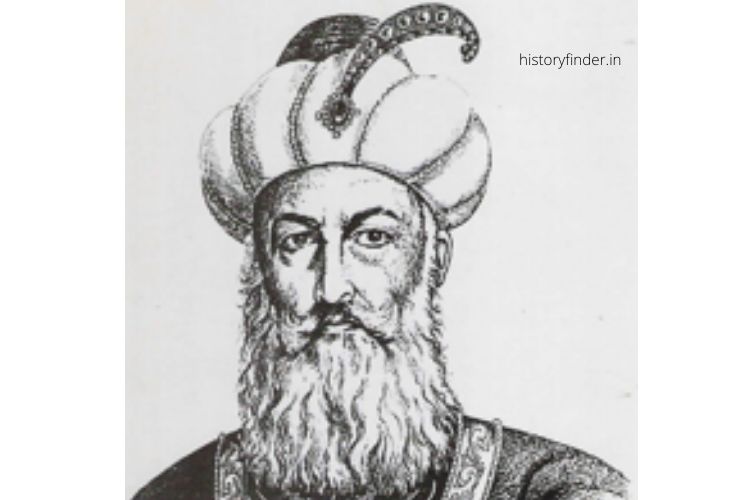The Sultanate of Delhi, was a ruling period of 320 years (1206 – 1526 CE) by four different dynasties in the history of India. The Sultans ruled entire north India, Pakistan and some parts of Bangladesh and Nepal, keeping Delhi as their capital.
Background: Assassination of Muhammed Ghori
Majority of historians believe Muhammed Ghori (or, Ghuri) of Ghurid dynasty was the true founder of Muslim rule in India. Between 1175 and 1206 CE, Muhammed Ghuri had invaded several times to Indian sub-continents. Although, Muslim invasion to India was not the first time. But, none of the past invaders could form a stable empire in India.

Ghori was assassinated at Kot Dhaimak in present day Pakistan, on 15 March, in 1206 CE; while returning to Ghazni. But, no one could confirm who was actually behind this killing. During his invasions to Indian sub-continents, Ghori had conducted so many killing massacres. Therefore, some historians believe, possibly it was an act of revenge from one those victims.
Some historians believe that it was the Khokhars of Dhaimak area. Earlier, Ghori had conducted few military campaigns against the Khokhars. On 15 March, 1206, a small guerilla troop led by Ramlal Khokhar, attached the Ghurid caravan. The Ghurid forces couldn’t handle the surprise attack in guerilla tactics. Shortly they captured the Ghurid Sultan who was himself in the caravan. Finally, Ramlal Khokhar beheaded the Sultan of Gazni.
Qutub ud-din Aibak: the first ruler of Delhi Sultanate
Qutub-ud-din Aibak was the founder of the Sultanate in Delhi. The first ruler of Delhi Sultanate belonged from Turkic Mamluk dynasty and also was a former slave of Muhammed Ghori. The Sultan of Ghazni, Ghori had treated his slave generals like his son. While returning to Ghazni in 1206, he had appointed Aibak as the regional governor for northern India.
Qutub-ud-din Aibak, the first Sultan of Delhi was famous for his generosity and kindness. He ruled Delhi for just four years (1206 -1210 CE), but won the title of ‘Lakh Data’. He started the construction of famous monument of Delhi, Qutub Minar but couldn’t finish it. Later on, Shams ud-din Iltutmish, son-in-law of Aibak completed the construction of Qutub Minar by 1220 CE. UNESCO considered Qutub Minar as a World Heritage Site in 1993.
The first Sultan of Delhi, Aibak, died in 1210. After his death, Aram Shah became second Sultan of Delhi Sultanate. But he could only rule till was assassinated in 1211.
Rule of Iltutmish in Delhi
Shams ud-din Iltutmish was the son-in-law of Qutub ud-din Aibak. Majority of historians say, Shams ud-din had to shed a lot of blood to consolidate his power on Delhi Sultanate. Aram Shah became his first victim in 1211, when Iltutmish became the third but stable ruler of the Sultanate of Delhi. For his nature, many of Aibak’s nobles went against him. But, Iltutmish was desperate and mercyless to strengthen his position in Delhi.
During his reign, Sultan Iltutmish expanded his territory up to Multan towards the west. Further, he was also successful in his military campaign to Bengal. Apart from these major military campaigns, he had to fight a lot against the Hindu rulers of Ranthambore and Sivalik. Following his death in 1236, the Sultanate of Delhi came under few weak rulers for next 30 years.
Period of Ghiyas ud-din Balban
Finally in 1266, Ghiyas ud-din Balban consolidated Delhi Sultanate again as the ninth Mumluk Sultan. Ghiyas ud-din ruled in Delhi up to 1287 CE and tried a lot to establish peace and order under his reign. He built many small outpost with small military troops to reinforce the rule and order. Balban was also successful to resist and repel many invasions from the Mongols.
After death of Ghiyas ud-din Balban in 1287, Muhammed Qaiqabad ascended the throne of Delhi. He became the tenth and last Sultan of Delhi Sultanate from Mamluk dynasty. But, following his assassination by the Khaljis in 1290, it ended the era of Mamluk dynasty in the Sultanate of Delhi.
Rise of Khalji Dynasty in the Sultanate of Delhi
[coming soon]